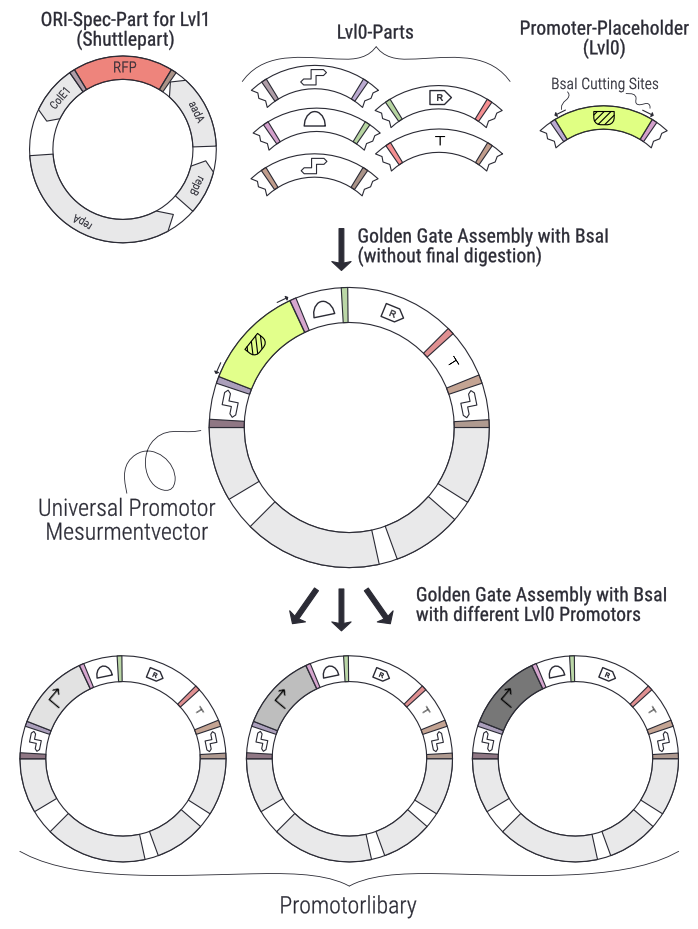pMC_0_4_XX_CDS_placeholder
Sequence and Features
- 10COMPATIBLE WITH RFC[10]
- 12COMPATIBLE WITH RFC[12]
- 21COMPATIBLE WITH RFC[21]
- 23COMPATIBLE WITH RFC[23]
- 25COMPATIBLE WITH RFC[25]
- 1000COMPATIBLE WITH RFC[1000]
Description
This part is one of the place holders published by iGEM Marburg 2019. These place holder parts can be used in assemblies to subsequently replace it with another part of the same type in a secondary Golden Gate assembly. Applications like characterization of a part collection and screening of a library of degenerated sequences require to build an array of constructs that only differ in one position. Place holder can rationalize these large scale assemblies: Instead of building each plasmid from scratch, a place holder is used to generate an entry vector.
In this entry, the part to be screened can then be subsequently inserted. The advantages of using placeholder in high throughput assemblies are clear: A seven part assembly usually requires to screen multiple colonies before finding the right one, meaning that a lot of test digesting or sequencing is involved. This is feasible if one wants to construct only a few parts - for high throughput assemblies the cost and time does not scale well enough. A two part assembly however has an extremely high success rate, meaning that in most cases it is sufficient to just pick one colony to get correct sequencing results. This two step assembly heavily cuts down the invested workload and the cost per sample. iGEM Marburg 2019 investigated these advantages on the example of a 20-piece large scale assembly.
Usage
Place holders are used in assemblies like any other part in the Marburg Collection 2.0, just make sure to leave out any final digestion step in your Golden Gate reaction cycle to make sure the dropout does not cut itself out. For more information head over to Design of the placeholders iGEM Marburg 2019 .
Compability
These parts are compatible with the RCF [1000] standard and can be used in any part collection that uses the PhytoBrick standard of overhangs. BsaI can be used as restriction enzyme for âLVL1â like assemblies of single transcription units. For more information we recommend to head over to Design of the Marburg Collection.

